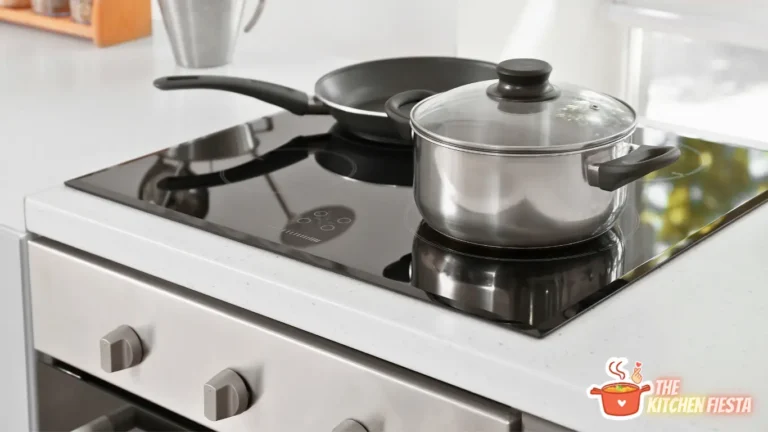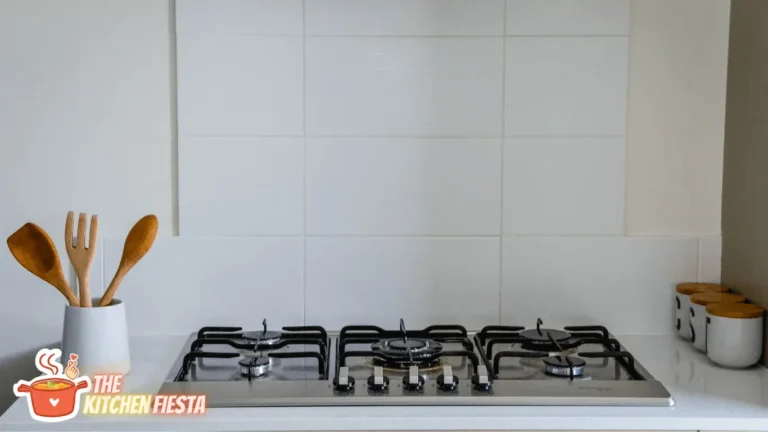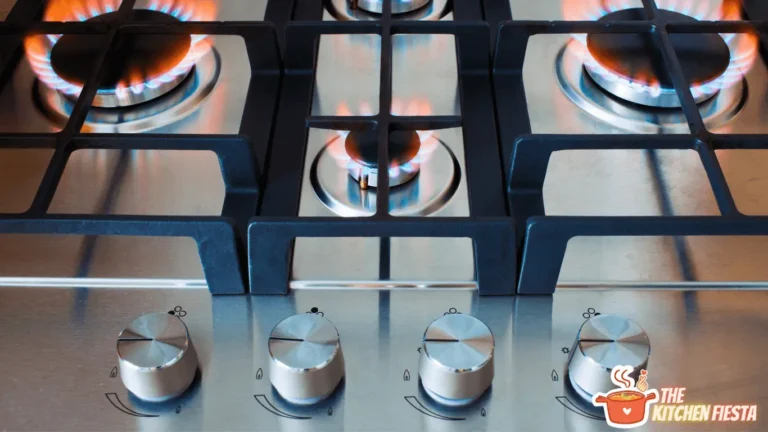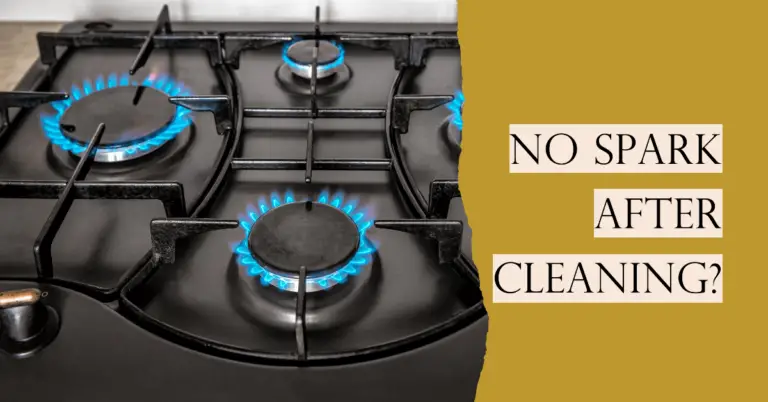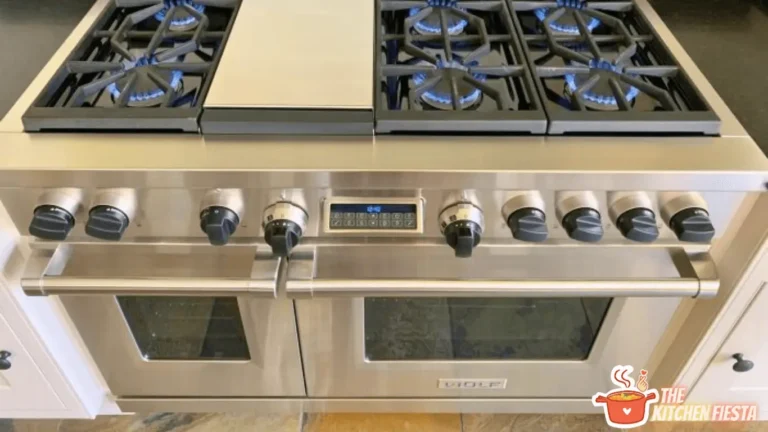Why Is My Gas Stove’s Pilot Light Always On?
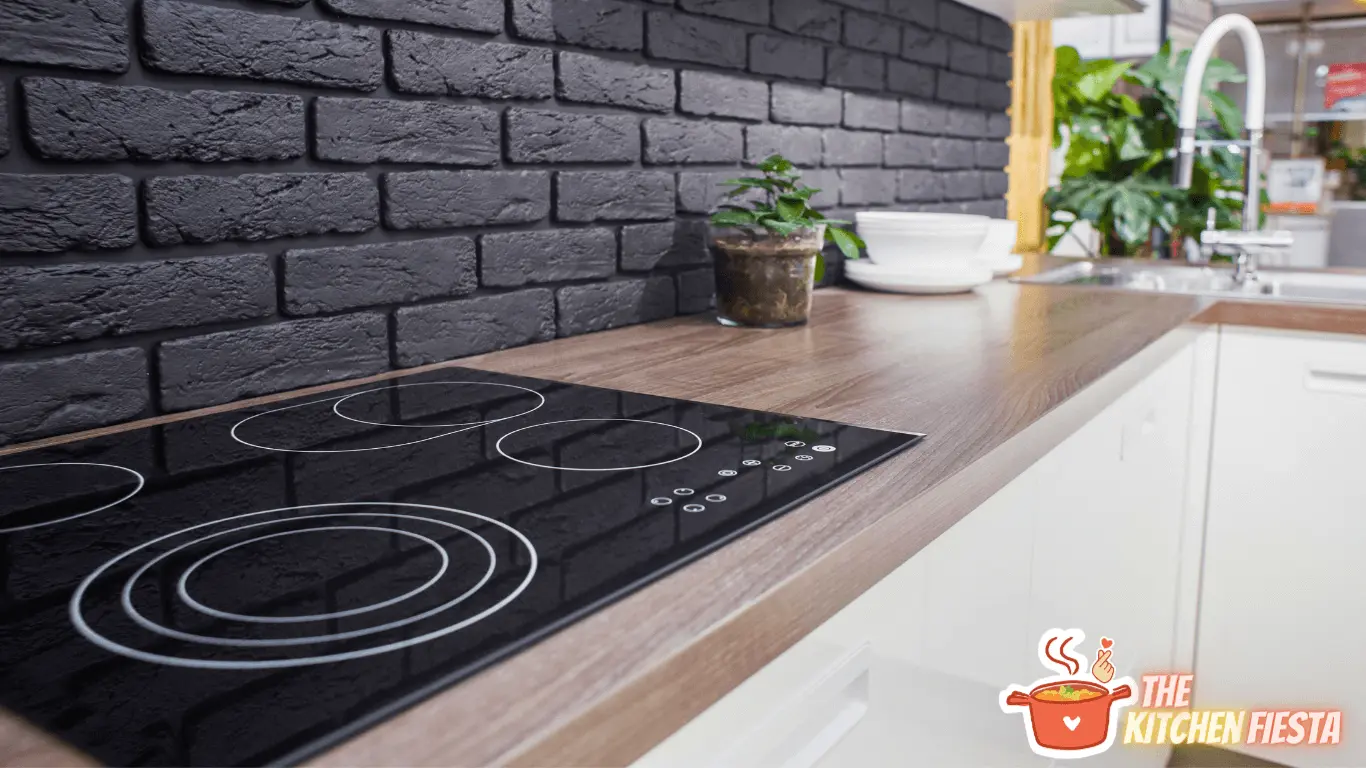
Do you have an older gas stove that seems to have a small flame that’s constantly burning? That pilot light is designed to ignite the gas burners, but is it safe and necessary to have it on all the time?
Many people wonder: should I turn off my gas stove’s pilot light to save money and increase safety?
The short answer is – it depends! While a standing pilot flame does use a small amount of natural gas, it serves an important function. However, there are times when shutting it off makes sense.
In this article, we’ll cover everything you need to know about gas stove pilot lights:
- What is a pilot light and why are they used
- How much gas does a pilot light use
- Safety concerns and risks
- Signs your pilot needs service
- How to light and relight your stove’s pilot
- When you should turn the pilot off
- Alternatives like electric and electronic ignition
- And more!
Let’s start by understanding why some gas stoves have constantly-burning pilot lights in the first place.
What Is the Purpose of a Gas Stove Pilot Light?
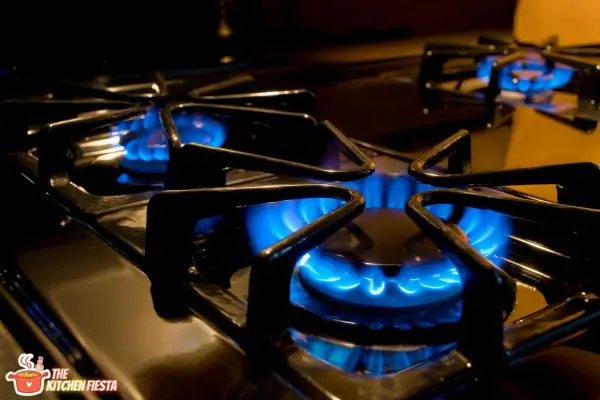
A pilot light is a small flame that ignites the gas for the burners on a traditional gas stove or oven. It stays lit even when you aren’t using the appliance, providing a ready ignition source for the gas whenever you turn a burner knob.
Older gas stoves nearly always have a standing pilot light that is designed to ignite the gas coming from the burners. The primary purpose of the pilot light is to provide a constant flame that can ignite the gas anytime the stove is used.
Here’s how it works:
- The pilot light uses a tiny amount of natural gas which flows from the supply line and keeps a small flame burning at all times.
- When you turn a burner knob to ignite the stove, a valve opens allowing more gas to flow.
- The existing pilot flame then ignites the incoming gas at the burners, allowing them to light immediately.
Historically, the pilot light served several useful functions:
- It eliminated the need to manually light the burners with a match each time the stove was used.
- It provided a ready ignition source before electronic ignitions existed.
- The small flame indicated the gas supply was flowing properly.
- It could immediately relight the burners if they were accidentally blown out.
For these reasons, an ever-burning pilot light became the standard method for igniting gas stoves up through the 1970s.
Do New Gas Stoves Still Have Pilot Lights?
In most modern gas stoves and ovens manufactured today, you won’t find an old-fashioned, standing pilot light. There are two main reasons for this change:
1. Electronic Ignitions
Newer models use electronic ignitions to light the burners. With an electronic ignition:
- No standing pilot is needed since the system uses an electric spark to ignite the gas.
- Pressing a button creates an electric current, generating a spark to light the burner.
- This eliminates the need for a constantly burning pilot flame.
2. Improved Safety
A standing pilot can allow small amounts of unburned gas to leak into the home. New stoves with electronic ignition remove this risk.
Modern ovens with electronic ignition may still have a separate oven pilot to light the oven. But even these often ignite only when the oven is turned on, extinguishing when not in use.
So in summary, most gas stoves manufactured in the past 20-30 years will not have a standing pilot light constantly burning. This older technology is generally only found in vintage stoves.
Is It Safe to Have the Pilot Light on Constantly?
For older gas stoves that still utilize a standing pilot light, is it safe to have that small flame burning 24/7? There are some pros and cons to consider.
Potential Safety Risks
- Gas leaks. If the pilot is damaged or improperly adjusted, unburned gas can leak out. This could lead to carbon monoxide buildup or even explosions.
- Carbon monoxide. Even a properly burning pilot produces a small amount of this deadly gas. Proper ventilation is critical.
- Gas buildup. If the pilot flame blows out but the gas keeps flowing, dangerous levels of gas could accumulate.
- Fire hazard. The open flame could ignite nearby combustibles if stove controls malfunction.
Benefits of the Standing Pilot
- Provides a ready ignition source for the burners when needed.
- Alerts you to potential gas supply issues if the pilot goes out.
- Only uses a minimal amount of gas when operating safely.
Precautions for Safe Operation
If you do opt to allow your vintage stove’s pilot to remain lit, some precautions include:
- Ensuring proper ventilation to dissipate carbon monoxide
- Checking that the pilot burns cleanly with no unusual smells
- Turning off the main gas line if leaving home for extended periods
- Not storing flammable materials near the stove
Overall, while a constantly burning pilot light does have some risks, if the appliance is properly maintained, vented, and monitored, the benefits often outweigh the potential dangers.
How Much Gas Does a Pilot Light Use?
One concern homeowners have regarding pilot lights is the amount of natural gas they consume. Is it a significant waste of energy and money?
Most experts estimate that an older gas stove pilot burns somewhere between 15-30 cubic feet of gas per day. Under normal residential gas rates, this translates into approximately $5-15 per month in energy costs.
So while the pilot does use a notable amount of fuel, this must be weighed against the convenience it provides by always being lit. For many with older stoves, the small ongoing cost may be worth it.
You can reduce the gas usage slightly by adjusting the pilot flame to the smallest size possible while still igniting the burners properly. Your appliance repair technician can show you how to adjust the pilot control.
Should I Just Turn Off My Gas Stove’s Pilot Light?
Since the standing pilot uses some energy and poses minor safety risks, many wonder if they should simply keep it turned off except when actively using the stove.
There are good arguments on both sides:
Potential Reasons to Turn Off the Pilot
- Eliminates the small ongoing waste of gas
- Removes the risk of gas leaks or carbon monoxide
- Increased safety when appliance not monitored
Reasons to Leave the Pilot On
- Convenience of always having an active ignition source
- Avoids having to relight each time you cook
- Alerts you if there is an issue with the gas supply
There is no definitively right or wrong choice here. Some homeowners choose to extinguish their pilot when away from home for a prolonged period but keep it on otherwise. Others are diligent about turning it off whenever the appliance is not in use.
In the end, you have to weigh the pros and cons and decide what works for your household. Just be sure you know how to safely relight the pilot when needed.
How Do I Light and Relight the Pilot on My Gas Stove?
The specific steps to manually ignite your stove’s pilot light vary by model and manufacturer. However, the general process is similar:
1. Locate the pilot assembly
- Remove any grates/pans to access the pilot – often at rear of cooktop.
- Pilot has small gas tube with flame opening.
2. Turn off the gas valve
- Rotate the gas valve knob clockwise to off position
3. Wait 5-10 minutes
- Allows any built-up gas to dissipate
4. Light your ignition source
- Have long match or butane lighter ready
5. Turn gas valve to pilot position
- Knob has a “pilot” setting – turn to this spot
6. Press valve knob while lighting pilot
- This permits gas flow to the pilot tube opening
- Light match/lighter and hold flame to pilot opening
7. Hold knob down until pilot ignites and stays lit
- Keep knob pressed for 30-60 secs after lit
- Pilot should stay on after releasing knob
8. Turn gas valve to “on” position
- Pilot is now relit and will ignite burners
Be sure to refer to your appliance’s documentation for the exact lighting steps. With most models, you’ll hear a popping sound as the pilot ignites. If no ignition after several tries, call for service.
What Are Signs Your Pilot Light Needs Service?
While pilot lights don’t require much maintenance, you should be alert for any of these common signs of problems:
- Pilot goes out regularly – A stable pilot should rarely need relighting. Frequent outages likely indicate an underlying issue.
- Gas smell – If you detect gas, especially with the pilot on, this points to a potentially dangerous leak.
- Lazy yellow flame – The pilot should burn crisp and blue. A weak, sooty flame is inefficient.
- Burners won’t light – If the burners fail to ignite from the malfunctioning pilot, it needs adjustment or repair.
- Multiple attempts to light – Having to make many repeated tries to relight the pilot signal a problem with the ignitor or gas flow.
- Carbon buildup – The pilot may need cleaning if you see soot and carbon collecting around the small flame opening.
Don’t ignore these warning signs – have your gas stove serviced promptly to get the pilot properly realigned and the issue corrected.
What Are the Risks of a Defective Pilot Light?
It’s essential to address any pilot light defects quickly before major safety hazards develop. Potential dangers include:
- Gas leaks leading to fire/explosion – If unburned gas escapes around a damaged pilot, this can create an extremely dangerous situation. Any igniting spark could set off an explosion and fire.
- Carbon monoxide (CO) poisoning – A malfunctioning pilot flame can produce elevated levels of odorless CO gas that can quickly sicken or kill occupants.
- Burners won’t ignite – A defective pilot may fail to successfully ignite the gas at the burners. This leaves unburned gas spewing out, risking CO poisoning or explosions.
- Gas valve defects – Problems with valves not closing fully or pilot tubes cracking can cause gas leaks.
Don’t take chances with a damaged or malfunctioning gas appliance pilot. Instead, contact your gas stove repair professional promptly to identify and resolve the issue.
When Should I Call a Pro for Pilot Light Problems?
You don’t need a technician for routine pilot maintenance. However, for any of these scenarios, it’s best to call an appliance repair expert:
- Can’t get pilot to ignite – If the pilot fails to light after several careful attempts to relight it, a repair pro can determine why and get it fixed.
- Pilot won’t stay lit – If the pilot repeatedly goes out, even after initially igniting, this indicates a deeper problem needing professional diagnosis.
- Gas smell – Any gas odor with the pilot on likely means a hazardous leak – shut off the gas line and call for help immediately.
- Pilot produces high/odd flames – Extra-large, irregular pilot flames could mean too much gas flow – have it adjusted.
- Pilot is excessively dirty/sooty – While some discoloration is normal, heavy debris accumulation requires cleaning by a qualified technician.
- Burners not igniting properly – If the pilot fails to successfully ignite the full burners, appliance repairs are needed.
Don’t delay in calling for repairs – an unstable or damaged pilot can quickly become a safety issue. Trained pros have the tools and expertise to diagnose and remedy any problems.
Are There Alternatives to a Standing Pilot Light?
If your vintage gas stove’s pilot is problematic or wasteful, you may wonder if there are suitable alternatives available. Here are a few options to consider:
- New electronic ignition stove – Modern stoves with electronic igniters eliminate the need for any standing pilot. Push button start eliminates energy waste.
- Manual light with match – You can turn off the pilot and just use a long match to ignite the burner each time the stove is used.
- Electric stove – Switching to an electric range removes the need for any gas, standing pilots, or ignition concerns.
- Portable cooktop – For light or backup use, a single electric burner portable cooktop often suffices without standing pilot issues.
- Newer pilot-less gas stove – If you don’t want to lose the convenience of gas, consider replacing your vintage range with a newer pilotless model.
For those opting to keep their older gas appliance, remember that careful maintenance and monitoring for any pilot issues is advised.
Making Your Gas Stove More Efficient
Beyond addressing your pilot light, there are other ways to enhance efficiency with your existing gas stove:
- Have your burners adjusted – Professionals can optimize the gas-to-air ratio for clean, efficient combustion.
- Use appropriately sized pans – Pans too small for the burner allow wasted heat escape.
- Clean burners regularly – Dirt and debris can obstruct flames, reducing efficiency.
- Replace old ovens – Upgrading to a newer insulated model can slash cooking energy use.
- Use smaller ovens – Large ovens lose much heat when cooking small portions. Downsize when possible.
- Limit opener door openings – Check oven as little as possible to reduce wasted heat loss.
Key Takeaways on Gas Stove Pilot Lights
- Older gas stoves use standing pilot lights to ignite the gas burners
- Pilots provide ready ignition source but use some extra gas
- Electronic ignitions on newer models eliminate need for pilots
- Pilots are generally safe if functioning properly
- Signs of pilot issues include odd flames, gas smell, frequent outages
- Turn off pilots when away for extended periods as a precaution
- Know how to properly relight your stove’s pilot when needed
- Call professionals promptly for any malfunctioning pilot problems
We’ve covered everything you need to confidently use, maintain, and troubleshoot the pilot light on your gas stove. Being aware of any potential safety risks, knowing when to turn it off, and identifying any servicing needs will keep your vintage appliance operating safely and efficiently.

